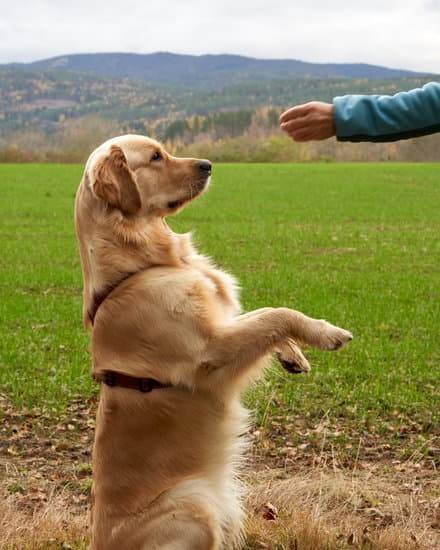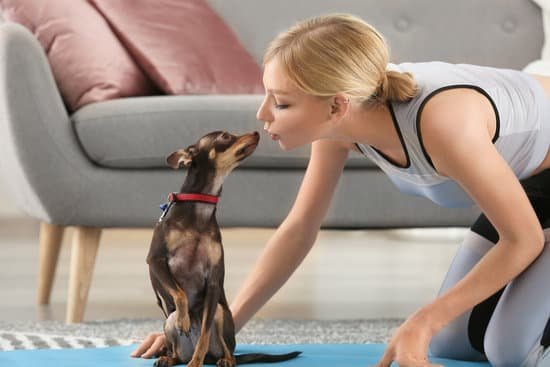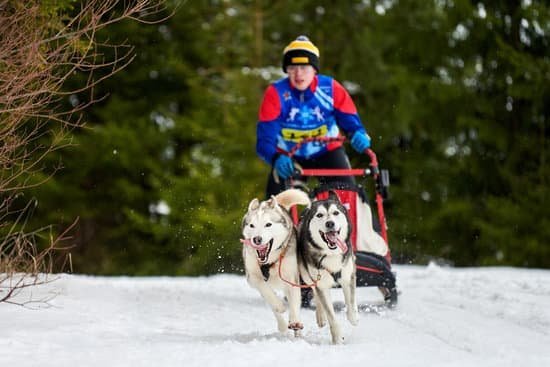Are you wondering how to train your dogs at home? Training your furry friend not only helps in creating a strong bond between you and your pet but also ensures their safety and the well-being of those around them. Whether you have a new puppy or an older dog, home training is essential for their overall development and behavior.
Setting realistic training goals is the first step towards successfully training your dog at home. By understanding what behaviors are important to instill in your pet, you can create a targeted plan for their training. Creating a positive environment at home is crucial for effective training, as it helps in building trust between you and your dog.
In this article, we will explore the key components of training your dog at home, from basic commands every owner should know to addressing common behavior issues. We will also delve into the importance of mental stimulation and physical exercise for dogs, as well as the role of consistency and patience in successful training.
So, if you’re ready to embark on this journey with your furry companion, read on to discover how you can train your dogs at home effectively.
Setting Realistic Training Goals
One way to set realistic training goals for your dog is by breaking down the desired behaviors into smaller, more manageable steps. For example, if you want to teach your dog to sit on command, start by rewarding them for simply lowering their hind end towards the ground.
Once they consistently perform this action, you can then progress to only rewarding them when they fully sit. By taking small steps and celebrating each achievement, you’ll be setting your dog up for success.
Another important aspect of setting realistic training goals is understanding your dog’s breed and individual personality. Certain breeds may excel in specific types of training, while others may struggle with certain commands. Additionally, some dogs may be more eager and quick learners, while others may take more time and patience to grasp new skills.
It is crucial that we understand how important are the connection between us (dog owners) and our dogs when we trained them at home; this process will take time but it will always worth it.
| Setting Realistic Training Goals | How to Train the Dogs at Home |
|---|---|
| Breaking down behaviors into smaller steps | Taking small steps and celebrating each achievement |
| Understanding the importance of the connection between dogs and owners | The process takes time but it always worths it. |
Creating a Positive Training Environment at Home
Another key aspect of creating a positive training environment is utilizing the right tools and resources. This could include things like treats, toys, clickers, or any other items that will help reinforce good behavior during training sessions. Additionally, using tools such as leashes and collars can also help maintain control during training exercises.
Consistency in the training environment is also essential. Dogs thrive on routine, so it’s important to choose a specific time each day for training sessions. This will help your dog understand when it’s time to focus and learn new commands. By maintaining consistency in the training environment, you can help your dog feel secure and comfortable during the learning process.
Training your dog at home can be incredibly rewarding, but it requires patience, dedication, and the willingness to adapt to your pet’s individual needs. By understanding the importance of creating a positive training environment, you can set the stage for successful at-home training sessions.
| Key Training Tips | Benefits |
|---|---|
| Find a quiet space for training | Reduces distractions and helps with focus |
| Utilize tools such as treats and toys | Reinforces good behavior during sessions |
| Maintain consistency in training schedule | Helps dogs understand when it’s time to learn |
Basic Training Commands Every Dog Owner Should Know
As a dog owner, it is crucial to understand and implement basic training commands to ensure the safety and well-being of your pet. These commands not only help create a well-behaved and obedient dog, but also strengthen the bond between you and your furry companion. Here are some essential training commands that every dog owner should know.
Sit
Training your dog to sit on command is one of the most fundamental and essential skills. This command not only helps in controlling your dog’s behavior but also teaches them self-control. To teach your dog to sit, hold a treat close to their nose and slowly raise your hand above their head.
As their head moves up, their bottom will naturally lower into a sitting position. Once they are in a sitting position, say “sit” and give them the treat as a reward.
Stay
The command “stay” is important for keeping your dog safe in various situations. Start by telling your dog to sit, then hold out your palm towards them and say “stay”. Take one step back and wait for a few moments before returning to praise and reward them. Gradually increase the distance and duration of stay as they become more comfortable with the command.
Come
Teaching your dog to come when called is crucial for their safety, especially when they are off-leash. Begin indoors or in a fenced area so that there are no distractions. Use a leash attached to their collar and walk away from them while saying “come”. When they reach you, praise and reward them with treats. Repeat this process multiple times until they reliably respond to the command.
By following these basic training commands, you can establish control over your dog’s behavior while strengthening the bond between you both. Be patient, consistent, and use positive reinforcement techniques in all aspects of
Utilizing Positive Reinforcement Techniques
When it comes to training your dog at home, positive reinforcement techniques can be highly effective in encouraging good behavior. The key principle behind positive reinforcement is rewarding your dog for exhibiting the desired behavior, which increases the likelihood of that behavior being repeated in the future. Here are some positive reinforcement techniques that you can use to train your dogs at home:
1. Treat-Based Rewards: One of the most common positive reinforcement techniques is using treats as rewards for good behavior. Whenever your dog follows a command or behaves well, reward them with a small treat.
2. Verbal Praise: Dogs respond well to verbal praise and positive attention from their owners. When your dog exhibits the desired behavior, use a happy and enthusiastic tone of voice to praise them for their actions.
3. Playtime and Affection: Another form of positive reinforcement is incorporating playtime and affection as rewards for good behavior. Spend time playing with your dog or giving them extra cuddles and attention when they display the desired behavior.
Using these positive reinforcement techniques will not only help in training your dog but also strengthen the bond between you and your pet. Remember to be consistent in applying these techniques and avoid using punishment-based methods, as this can lead to fear or anxiety in your dog.
By utilizing positive reinforcement techniques, you can effectively train your dogs at home and set them up for success in learning new commands and behaviors. Incorporating these methods into your training routine will create a positive and enjoyable learning experience for both you and your furry friend while strengthening the bond between you both.
Addressing Common Behavior Issues
Dealing with common behavior issues in dogs can be a challenging aspect of training at home. However, with patience, consistency, and the right approach, pet owners can effectively address these issues and create a harmonious environment for both them and their furry companions.
Identifying Behavior Issues
The first step in addressing behavior issues is identifying them. Whether it’s excessive barking, jumping on guests, or separation anxiety, understanding the root cause of the behavior problem is crucial. Observing your dog’s actions and triggers can provide valuable insight into what may be causing the unwanted behavior. Consulting with a professional trainer or veterinarian can also help pinpoint the underlying issue.
Implementing Positive Reinforcement
Once the behavior issue has been identified, implementing positive reinforcement techniques is essential. Using treats, verbal praise, or toys to reward good behavior can help redirect your dog’s actions in a positive way. For example, if your dog tends to bark excessively when someone comes to the door, rewarding them for remaining calm and quiet during the visit can reinforce this desired behavior.
Seeking Professional Help
In some cases, behavior issues may require the expertise of a professional dog trainer or animal behaviorist. Seeking their guidance can provide tailored strategies and personalized solutions to address specific problems that may be difficult to tackle alone. These professionals can offer insights on how to train the dogs at home effectively while ensuring the well-being of both owner and pet.
By identifying behavior issues, using positive reinforcement techniques, and seeking professional help when needed, pet owners can address common problems effectively as part of their home training regimen. With dedication and patience, even challenging behaviors can be managed and improved over time for a well-behaved and happy canine companion.
Incorporating Mental Stimulation and Physical Exercise
One of the most important aspects of training your dog at home is incorporating mental stimulation and physical exercise into their daily routine. Dogs, regardless of breed, age, or size, need both mental and physical activities to keep them engaged and prevent behavioral issues.
To provide mental stimulation for your dog at home, consider incorporating the following activities:
- Puzzle toys: Invest in puzzle toys that require your dog to work for treats or food. This engages their brains and keeps them occupied for extended periods.
- Training sessions: Regular training sessions not only teach your dog new commands but also keep their minds sharp and focused. Use positive reinforcement techniques to make learning enjoyable for your pet.
- Sensory games: Engage your dog’s senses by playing games that involve sight, smell, and sound. Hide treats around the house or play hide-and-seek to stimulate their senses.
In addition to mental stimulation, dogs also require ample physical exercise to stay healthy and happy. Here are some ways you can ensure your dog gets the physical activity they need at home:
- Daily walks: Take your dog for regular walks around the neighborhood or in a nearby park. Aim for at least 30 minutes of walking each day to keep them active.
- Playtime: Set aside time each day for play sessions with your dog. Whether it’s fetch, tug-of-war, or running around in the backyard, active play helps burn off excess energy.
- Agility exercises: Create an agility course in your backyard using household items like cones, tunnels, and jumps. This not only provides physical exercise but also challenges their coordination and problem-solving skills.
By incorporating these mental stimulation activities and ensuring regular physical exercise for your dog at home, you’ll not only keep them physically fit but also mentally sharp. This can lead to a well-balanced and well-behaved pet in the long run.
Consistency and Patience
In conclusion, training your dog at home requires a significant amount of consistency and patience. It is essential to understand the importance of training your dog, not only for their behavior but also for building a strong bond between you and your pet. Setting realistic training goals is crucial in ensuring success, as it allows you to focus on specific behaviors or commands that are important for your dog’s well-being.
Creating a positive training environment at home is vital for your dog to feel comfortable and motivated to learn. Utilizing positive reinforcement techniques, such as treats and praise, can help reinforce good behavior and foster a strong connection with your pet. Addressing common behavior issues, whether it’s housebreaking or excessive barking, requires patience and understanding from the owner.
Incorporating mental stimulation and physical exercise into your dog’s routine is equally important for their overall well-being. Dogs need both mental and physical stimulation to stay healthy and happy. Finally, staying consistent with the training methods and being patient throughout the process are the keys to successful training at home. With time and dedication, you can effectively train your dog at home using the techniques outlined in this article.
Frequently Asked Questions
How Do I Start Training My Dog at Home?
Training your dog at home begins with establishing a consistent routine and setting clear boundaries. Start with basic commands like sit, stay, and come, using positive reinforcement and rewards to encourage good behavior.
What Are the 7 Commands to Train a Dog?
The 7 fundamental commands to train a dog are: sit, stay, down, come, heel, leave it, and off. These commands form the foundation for obedience training and help establish a strong bond between you and your dog.
What Are the 5 Golden Rules of Dog Training?
The 5 golden rules of dog training are based on consistency, patience, positive reinforcement, understanding your dog’s needs, and setting clear expectations. Consistent training sessions and clear communication are key to successful dog training.

Welcome to the blog! I am a professional dog trainer and have been working with dogs for many years. In this blog, I will be discussing various topics related to dog training, including tips, tricks, and advice. I hope you find this information helpful and informative. Thanks for reading!





